When Apple released the 2013 edition of the productivity suite formerly known as iWork, it represented a radical departure from iWork '09 and earlier versions. The "iWork" moniker disappeared along with upfront costs for many, and those were only two of the 2013 update's many changes. Things only move forward from there as the 2014 iteration doesn't backtrack, so those hoping for the old iWork to rise from the ashes will be disappointed.
However, Apple isn't plowing full steam ahead in the new direction either. This year's updates don't break much—if any—new ground. Rather, they add refinements, and version numbers reflect this: on the Mac, Keynote is now version 6.5, Pages 5.5, and Numbers 3.5 (up from 6.2.2, 5.2.2, and 3.2.2, respectively). And while "iWork '13" could be spotted once or twice in deep corners of Apple's support site last year, there's not a single mention of "iWork '14" this year. The icons have been streamlined a bit more, but don't look radically different. (That said, for simplicity's sake we'll continue to use the "iWork" name to refer to the entire suite, and "iWork '14" to refer to the new version.)
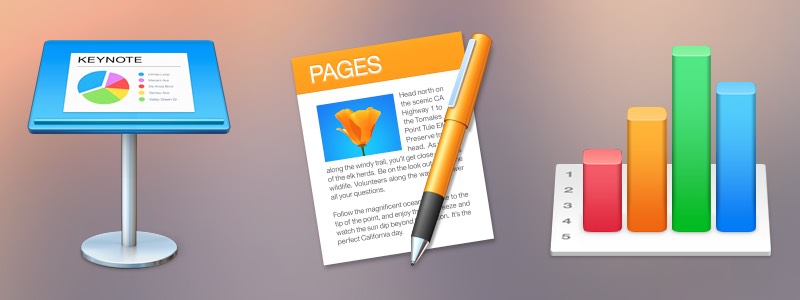
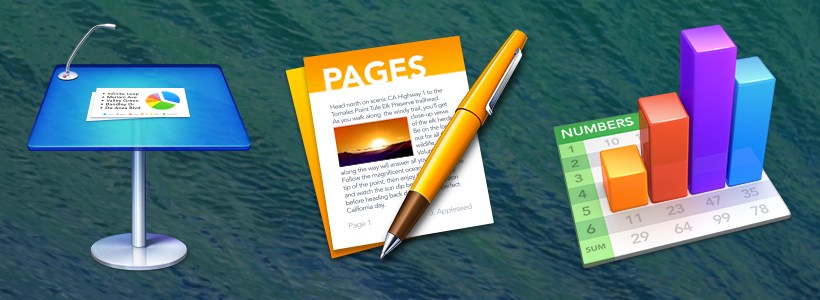
Like last year, Apple is giving away the iWork apps to anyone who purchases a new Mac or iOS device, but those with older devices will still have to pay. We also found them preinstalled on a new iPhone 6, something Apple began doing this year on the higher-capacity models. While, like last year, an existing OS X iWork '09 is left untouched, the iWork '13 apps are replaced.
Update: iWork '14 is only free for those who got (or are qualified to get) iWork '13 for free.
The file format: Single file vs. package
One thing hasn't changed: like iWork '13 before it, iWork '14 creates files that previous versions of the suite can't open. The file format hasn't really changed, it's just that Apple decided against using packages. A package is a folder that holds multiple files and folders but looks like a single file in the Finder. However, if you tried to transmit it over the Internet in the past, you'd possibly run into trouble. So the new versions of Keynote, Pages, and Numbers helpfully compress all the files that are part of a document into an actual single file.
At first blush, this seems utterly perplexing, because this is exactly how iWork '09 worked. The disadvantage of the '09/'14 single file method is that even a small change to a document requires the whole thing be written to disk in its entirety, including potentially large images and movies that are contained in the document. That may not be so bad on a Mac with a fast SSD, but it can make iCloud syncing a lot slower. Of course Apple also knows this, so the iWork '14 apps only use the single file method when saving a document locally on a Mac. The package format is used when saving to iCloud.
You get to keep the package format for local storage on the Mac if you prefer—for instance, because you want to exchange documents with iWork '13 users. Users can change this setting with "Change File Type" under "Advanced" in the File menu. In fact, dropping a 600MB movie in Keynote actually makes the program ask whether to switch to the package format, because "Keynote works best when you save large presentations as packages."

Saving as a just-over-600MB single file took 14 seconds to the internal SSD and about double that to an external 2.5" USB 3.0 HDD. The program remained responsive during the process. When using a package, the situation doesn't improve when saving by hitting ⌘S: it looks like Keynote then still writes out the whole file. Still, when using the package format, autosave is almost instantaneous.
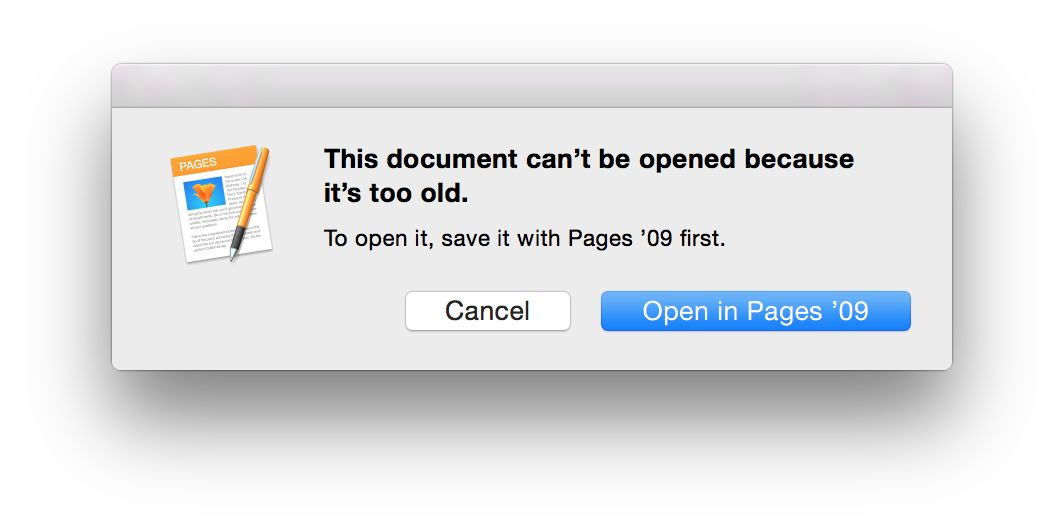
This is probably a good time to mention that iWork '14 can only open files created by iWork '09 and newer, some Microsoft Office, and plain text files (.RTF files are left in the dust). If you have any files made by older versions of iWork, or if you still have AppleWorks files, be sure to convert them with Pages '09 while you still can.
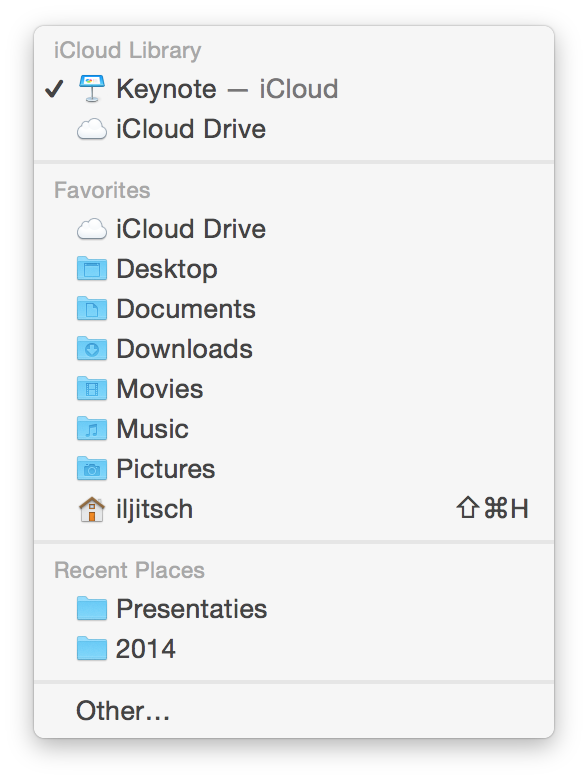
Saving to iCloud
Before the recent addition of iCloud Drive, each application that could save files to iCloud stored those files in its own iCloud folder. These folders are still there (see the top left corner in open/save dialogs), but with iCloud Drive, it's now also possible to save files to the top of the iCloud hierarchy or add new folders. An alias is added to the apps' folder when saving elsewhere. When you've created a new file and haven't saved it yet, it's saved as "Untitled" automatically—to iCloud. If you like to limit how much personal data gets uploaded to cloud services, save your new document to a local drive before you start typing.
Handoff
iWork now supports Handoff, the ability to open a document on one device and continue working exactly where you left off on a different device. 
Keynote on the Mac
Keynote saw a fair number of improvements earlier in the year, including three new animations and the addition of motion blur. Motion blur can be turned on application-wide as long as your Mac supports it. It looks like this blurring requires a beefy GPU: our test 2013 MacBook Pro is good enough to get the feature but not really good enough to pull it off. (The short version: Motion gets blurrier but also much choppier.) Objects can now be animated with the drift-and-scale, skid, and trace effects (new to this version), and there's a new "object revolve" effect to transition between slides.
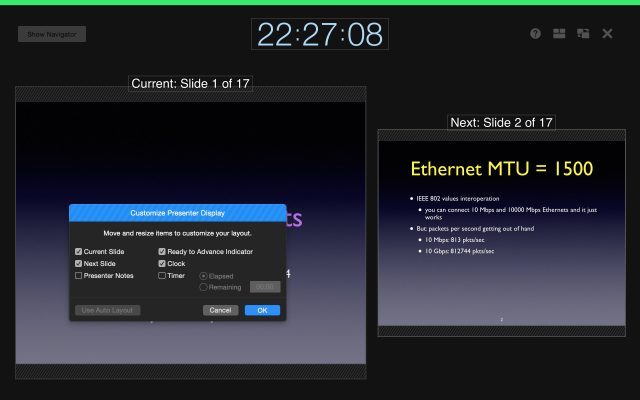
Keynote '14 brings back the ability to customize the presenter display. This doesn't add a ton of new options, but it does let you reorder and resize the different elements. There used to be a Remote app in the iOS app store for controlling Keynote on the Mac from an iOS device, but that function has now been included in the Keynote for iOS app.
For a while I thought I was imagining things, but it looks like Keynote applies a subtle shadow to text in shapes that can't be turned off.
reader comments
122